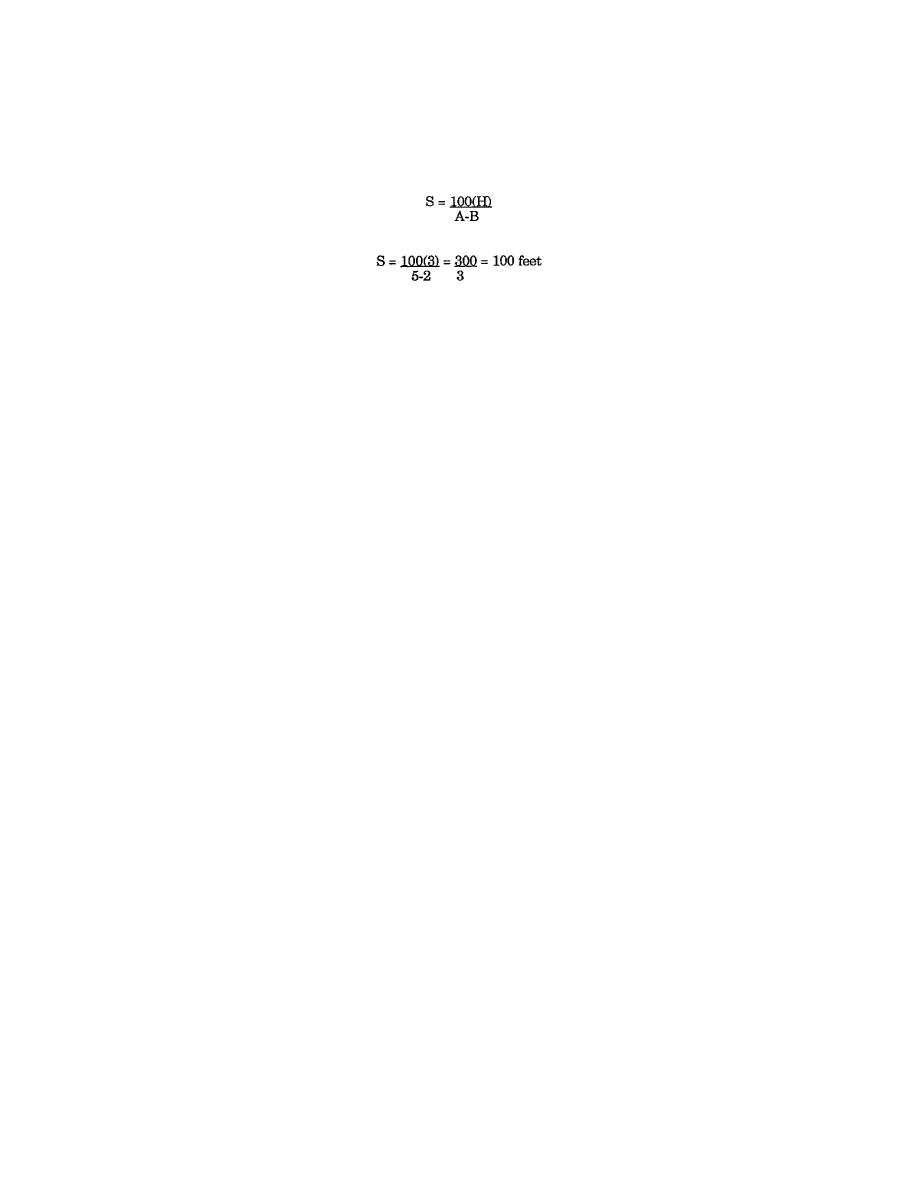
It is considered uneconomical to space checkdams closer than 50-foot intervals. An alternate solution should be
considered for shorter intervals, such as the use of concrete, timber, or boulder linings. For slopes over 8 percent,
consideration should be given to paving the channel.
Example: Original slope = 5 percent; chosen desired slope = 2 percent; and chosen H = 3 feet. Find S.
The spacing between checkdams is 100 feet.
The weir notch must be designed to carry the flow in the ditch.
Problems which occur involving checkdams include erosion around the dam. Causes include the weir notch being
too small or being clogged with debris so that flow occurs across the top of the dam. This causes erosion where
the dam is anchored into the ground, and if continued long enough, will erode around the dam. If this occurs,
there will be more damage to adjacent structures than if the dam was never installed.
RIPRAP AND RUBBLE
Since the values of "n" are in the denominator in Manning's Equation, increasing "n" will decrease the velocity.
To increase "n" the effective roughness of the ditch must be increased. This can be accomplished by protecting
the channel with riprap and rubble.
The method involves placing rocks or rubble in the ditch bottom so that the rocks prevent the soil from being
eroded. Usually the rocks should be larger than 6 inches. They should be hand-placed and compacted
individually in at least two layers. The riprap not only prevents erosion, but will also tend to decrease the velocity
in the channel due to its high "n" value, which makes it useful for lowering velocities in sections of channel when
making transitions to soil ditches from paved to other high-velocity ditches.
DECREASING THE HYDRAULIC RADIUS
Decreasing the hydraulic radius (R) will also decrease the velocity in a channel. This can be accomplished by
increasing the wetted perimeter (P) in relation to the area (A); in other words, making the ditch wider and
shallower. For example, consider the following ditch cross-sections (see figure 4-3, page 4-12).
4-11
EN5465


 Previous Page
Previous Page
